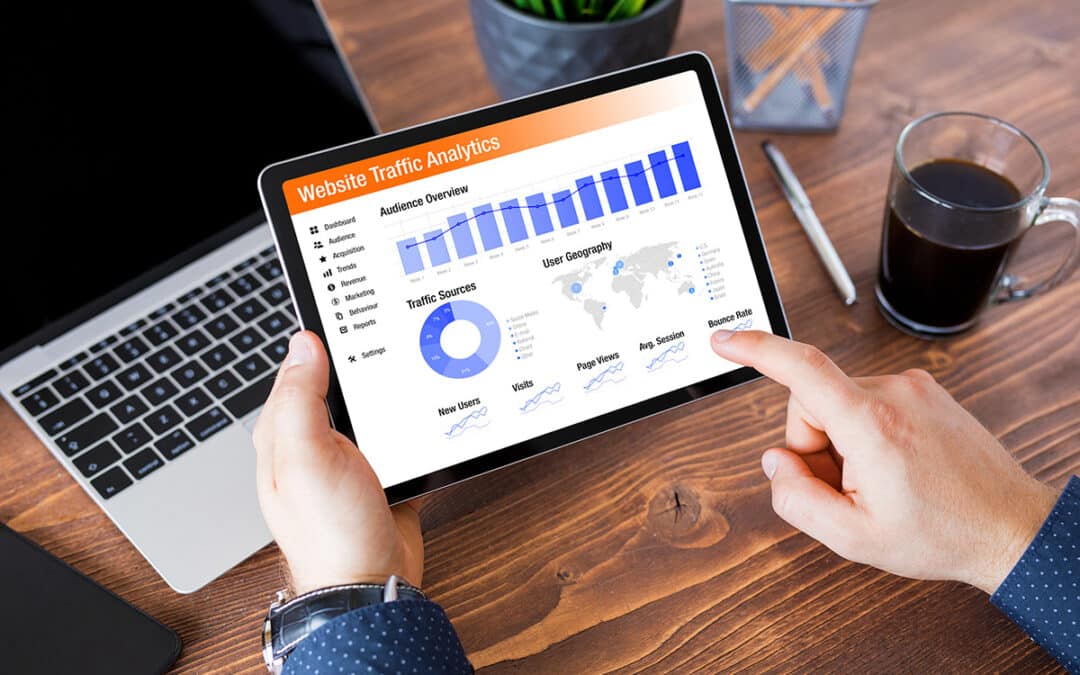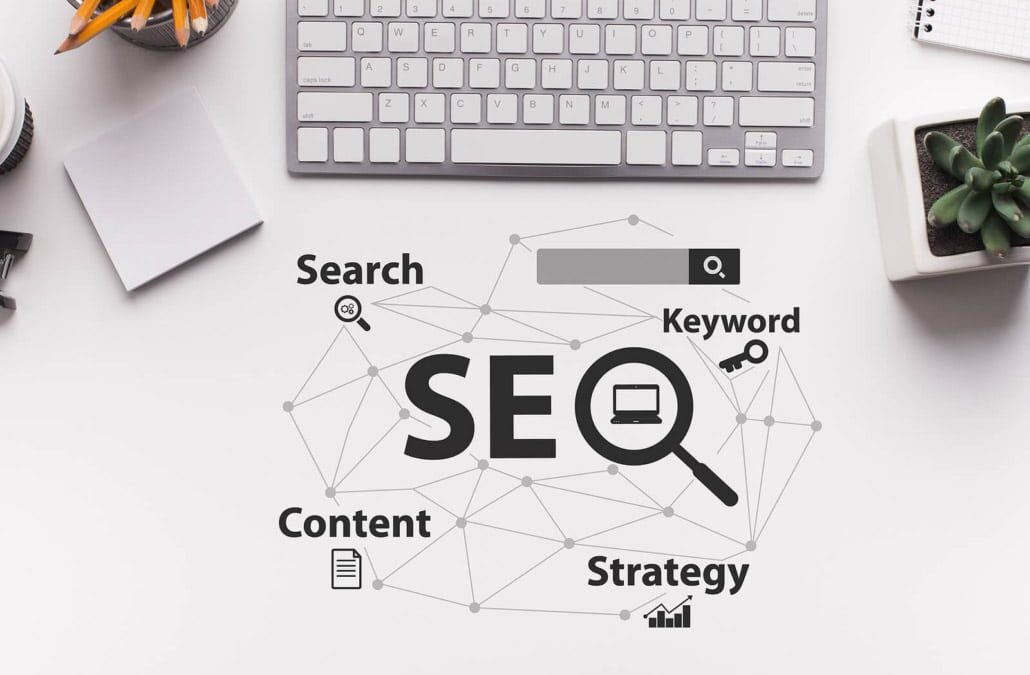There is power in numbers when building a SaaS product’s customer base. A single person or group rarely makes B2B purchase decisions of three or four. The average B2B buying team size is between 14 and 23 people1. Therefore, B2B marketers must appeal to each one. Fortunately, there are several B2B SaaS marketing strategies to do so.
B2B SaaS marketing leverages a winning combination of organic and paid media tactics to boost brand awareness, enhance lead generation, and drive conversions from cross-departmental B2B buying teams. Discover how to build a loyal customer base that will renew monthly subscriptions with these actionable B2B SaaS marketing strategies.
What is B2B SaaS Marketing?
B2B SaaS marketing refers to software-as-a-service (SaaS) marketing to businesses and organizations. The main difference between B2B SaaS marketing and other types of B2B marketing is that SaaS solutions are often sold on a subscription-based model rather than a single purchase.
SaaS marketing runs the gamut from B2B demand generation and brand awareness to lead nurturing and conversion. However, unlike other types of B2B marketing, B2B SaaS marketers must split their focus between converting new leads and driving constant customer retention. In addition, SaaS marketers must continue to target existing customers to ensure they renew a monthly subscription.
Like other types of B2B marketing, B2B SaaS marketing is often geared towards buyer groups instead of individuals. Where business-to-consumer (B2C) marketing is focused on creating one-on-one interactions for individual consumers, B2B marketing focuses on strategies with numerous stakeholders in mind. Take a look at the unique challenges B2B SaaS marketing presents.
Unique Challenges of B2B SaaS Marketing
Some aspects of B2B SaaS marketing create distinctive challenges for marketers and businesses. A primary challenge is creating enough content for a full-funnel marketing approach. A B2B SaaS marketing strategy must have dedicated content for brand awareness and customer acquisition at the top of the funnel and focus on customer retention at the bottom.
In other words, marketing efforts must drive new and recurring customers each month.
However, marketing software as a service can be a challenge in itself. SaaS products are not tangible solutions you can easily touch or feel; innate software issues or a clunky user interface can make for a complex marketing strategy. But those aren’t the only challenges impacting a B2B SaaS marketer when crafting content for a potential customer.
As with all product marketing, an oversaturated industry poses multiple obstacles for B2B SaaS marketers looking to make a splash in their respective industries. The SaaS market is expected to grow by 18% per year to reach $947.3 billion by 2026,2, and even the least-suspected niches have become over-crowded. Oversaturation drastically limits the ability to reach a potential customer.
Too much noise in one space has increased customer acquisition costs (CAC). As a result, SaaS businesses have had to maintain skyrocketing expenses — namely marketing, developmental, and operational costs — to achieve a singular subscriber. Of course, there are areas to cut down on expenses, such as limiting marketing efforts with a poor ROI, but we will discuss that soon.
A final challenge of B2B SaaS marketing, and arguably the most difficult, is the ability to convert leads into paying sales opportunities. Not everyone who enters the marketing funnel belongs to your target audience, and time spent on unqualified prospects only depletes time and resources. Here are our top tips to segment customers, create high-value content, and nurture leads better.
B2B SaaS Marketing Strategies
The above challenges, as well as the ever-changing digital marketing landscape, necessitate B2B SaaS marketers to solidify a strategy and hone in on precisely what moves the needle. In particular, a B2B SaaS marketing strategy must enhance brand awareness to draw new prospects into the marketing funnel, provide qualified leads with the confidence to complete a conversion, and encourage ultimate customer retention and brand loyalty.
A cohesive B2B marketing strategy is split evenly between organic strategies, such as search engine optimization (SEO) or content marketing, and paid marketing efforts like media buying. It can be tricky to strike the right balance between organic and paid efforts, especially when fine-tuning budgets. Look at how to craft a B2B SaaS marketing strategy that works for your business.
Organic Strategies for B2B SaaS Marketing
Organic marketing generates free traffic to a business over time rather than immediate direct traffic through a paid media channel. Organic strategies for B2B SaaS encompass inbound marketing techniques that focus on creating value for and connecting with an audience. A B2B SaaS marketing strategy should include organic tactics that educate and drive demand, such as:
- Search engine optimization (SEO)
- Social media marketing
- Email marketing
- Content marketing

1. SEO
SEO targets unpaid traffic by improving the placement of a website on search engine results pages (SERPs) for relevant keywords and queries. SERPs are highly significant to B2B marketers, as organic search drives 51% of all visitors to B2B sites.3
SEO, especially for B2B SaaS marketing, aims to improve a SaaS solution’s discoverability. Since 63% of purchases 4 are now attributed to an online experience, like a search engine, SaaS brands that can be easily found organically have a higher probability of building a more robust customer base with a higher propensity to convert month over month.
There are three components of SEO to implement in a B2B SaaS marketing strategy.
1. On-page SEO. Leverages relevant keywords throughout page content, meta tags, and alt-text to optimize a webpage for search engine algorithms. On-page SEO includes:
- Keyword mapping
- New page development
- Descriptive URLs
- Keyword-rich meta tiles, descriptions, and headers
- Schema markups for rich snippets
- Informative alt text for all imagery
2. Off-page SEO. Focuses on obtaining incoming hyperlinks from reputable third-party websites (backlinks), earning favorable mentions across the web, and improving the quality of internal links. Off-page SEO includes:
- Analysis of current backlinks and anchor text
- Backlink gap analysis
- Comprehensive backlinking strategy
- Google Business Profile development & citation building
3. Technical SEO. Configures the back-end of a website so it is easily discoverable and indexable by search engines and optimizes the website for the best user experience. Technical SEO includes:
- Proper formatting of the robots.txt file for the website
- Assurance that the website is mobile-friendly
- Enhancements to site speed, usability, and accessibility
- Correction of redirects, canonicals, and broken links
Major considerations for SEO for B2B SaaS marketing are the key performance indicators (KPIs) to track across Google Analytics and other optimization tools. When building a customer base for B2B SaaS, organic KPIs could include branded and non-branded clicks and impressions, total keywords ranking, organic traffic, and organic conversions to name a few. The KPIs you choose to target are going to depend on your overarching goals and SEO strategy. For help organizing all relevant KPIs, reach out to an enterprise SEO agency.
2. Social Media
Organic social media marketing uses various channels to reach potential customers, engage prospects with relevant content, and nurture leads further down the marketing funnel. B2B marketers report that a whopping 80% of social media leads come from LinkedIn, whereas 46% of B2B marketers use Facebook as a kingpin in their social media marketing strategy.5
When leveraging the benefits of social media marketing for B2B SaaS, marketers must develop a data-backed strategy with a straightforward method to measure success. With 66.8 million monthly active users in the United States alone,6 platforms like LinkedIn can be just as oversaturated as the B2B SaaS market, especially without an established strategy.
B2B SaaS marketers can incorporate organic social media with these best practices:
- Develop a social media plan for short-term gains and long-term growth that aligns with your business objectives, such as generating brand awareness or driving brand loyalty.
- Identify opportunities where other B2B SaaS companies lack on social media, such as providing informative resources or a variety of media types like videos and infographics.
- Create buyer personas for various players in the B2B buyer group and implement methods like social listening to understand what social media content they want to see.
- Leverage social media demographics and audience research to determine what social media channels you should create content for and how often.
- Optimize your social media profiles to reflect your unique brand identity, embellish your product differentiators, and point users to where they can learn more.
- Use analytics to set achievable goals and measure the success of your efforts, maintaining KPIs like engagement rate, impressions, response time, and conversions.
Utilizing a social media marketing (SMM) agency enables B2B SaaS companies to delegate these tasks elsewhere, improving efficiency and allowing for consistent brand development.
3. Email Marketing
Email marketing is a mainstay in a B2B SaaS marketing strategy, and for a good reason. Despite the growth of social media platforms and mobile messengers, email remains an integral piece of the digital marketing landscape — more than 4.2 billion people check their email daily.7 This could explain why email marketing has a 4200% ROI or a massive $42 return for each $1 spent.8
The best way to leverage email marketing in a B2B SaaS strategy is to implement campaigns at each marketing funnel stage.
- Top-of-the-funnel efforts should focus on outreach to identify new prospects and build your customer base.
- Middle-of-the-funnel efforts should enable lead nurturing to convert buying groups into loyal subscribers.
- Bottom-of-the-funnel efforts should engage potential buyers and maintain communication with current customers to increase brand loyalty and maximize revenue.
The first place to start with B2B SaaS email marketing is an email list. Prioritize building a robust email list from day one. Harness SEO efforts to drive traffic to pages with contact lead forms or gated content, such as industry ebooks. Once the list has a substantial number of email addresses, you can use them to create a custom audience for advanced retargeting (more on this soon).
You can also develop lead nurturing flows with a solid email list to build a loyal customer base. Segment your list into the top, middle, and bottom of the funnel and craft email drip campaigns that are highly relevant to users’ pain points and challenges. Drip campaigns are a series of automated emails that should provide just as educational content as it is promotional. Likewise, including product updates and new features to continuously engage current SaaS subscribers.
4. Content Marketing
Content marketing is the glue that keeps organic B2B SaaS strategies together. As a primary form of inbound marketing, content marketing services involve crafting relevant materials that attract the buyers in your target audience to your brand. B2B content marketing — especially B2B SaaS content marketing — relies on a thorough understanding of the type of content your audience wishes to see.
Use the buyer personas and audience research you initially crafted for social media to construct content pillars or content clusters for your marketing efforts. Content pillars consist of three to five topics or themes for which your SaaS brand will consistently create new materials. These pillars will guide the variety of materials you generate month over month and can be separated topically by channel (i.e., social media or email marketing) or by media type (i.e., written copy or video).
Consider these deliverables for an organic B2B SaaS content marketing strategy:
- Topical Blogs. Blogs are ideal for satisfying top-of-funnel queries and engaging potential buyers in researching to determine if your SaaS solution is right for them. Employing SEO blog writing will ensure that the right keywords and search intent are being prioritized.
- Guest Post Articles. Guest articles posted on reputable third-party sites serve as thought leadership content to help new leads build trust in your brand and assist in link building for off-page SEO.
- SEO Web Copy. Optimized service pages, frequently asked question (FAQ) pages, and comparison tables are ideal types of content marketing to drive middle-of-funnel leads.
- Ebooks and Whitepapers. Long-form content like ebooks and whitepapers give bottom-of-funnel prospects the confidence to make a purchase and can also be used as gated content to grow an email list.
- Video Marketing. B2B video marketing is the perfect way to capture the unique differentiators of a SaaS product and can be repurposed on a YouTube channel or social media platforms.
- Social Media Posts. From reels and video posts to infographics and attention-grabbing imagery, various social media posts can help B2B brands reach new customers, engage warm leads, and maintain satisfaction among current subscribers.
- Virtual Seminars. Seminars and webinars are primarily geared towards leads in the middle and bottom of the funnel to drive further confidence in purchasing decisions among each B2B buyer. Still, they can also act as another type of gated content.
Remember, the average B2B buying group is rarely just one individual. To earn buy-in from a multi-person group, your content must address multiple pain points and thoroughly explain the specific differentiators of your SaaS product. A content marketing strategy with established content pillars will help narrow down the topics and mediums that drive the highest ROI.

Paid Strategies for B2B SaaS Marketing
Paid or inorganic marketing uses sponsored methods to reach, engage, and convert audiences on a specific campaign. Unlike organic marketing, which generates traffic over time, paid marketing aims to micro-target B2B buyers to quickly guide them through the marketing funnel. These outbound techniques enable B2B SaaS marketers to initiate conversations with relevant leads. Used in conjunction with landing page testing to ensure optimal conversions and adding a free or paid live chat feature to your website, marketers can gain insightful data to streamline the pathway into and through the marketing funnel.
A B2B SaaS marketing strategy should leverage paid techniques for a solid customer base, such as:
- Paid social and influencer marketing
- Paid search
- Media buying
- Retargeting
1. Paid Social & Influencer Marketing
Though social media is undoubtedly an advantageous organic avenue for a B2B SaaS company, it can also be a fantastic channel for paid initiatives. Paid social and influencer marketing are two inorganic strategies to reach potential buyers who may have been challenging to target otherwise and can help enhance brand discoverability and awareness to load the top of the funnel with new leads.
First, paid social is a method to provide funds to social platforms to increase social posts’ visibility among your target audience. Unlike organic social, where marketers must seek out their desired audience with relevant content, paid social enables marketers to target a specific group of users who fit the previously crafted buyer persona or brand qualifications. Plus, paid or “promoted/boosted” social posts are a simple method to promote new blog content, products, and features.
Influencer marketing is a subset of paid social that involves providing funds to content creators or internet celebrities for these individuals to promote your brand. This type of paid marketing leverages users’ trust in an influencer to drive brand awareness and credibility. Most influencer marketing for B2B SaaS has the influencer create unique content for the brand’s social page and engage with the SaaS solution on the influencer’s profile.
There are a few considerations to keep in mind before embarking on paid social and influencer marketing, especially in the B2B SaaS space:
- Select social platforms wisely. Consider the user demographics of a platform before buying paid ads and ensure they are aligned with your brand; channels like LinkedIn are more likely to bring in your target buyer than channels like TikTok.
- Develop a budget and stick to it. Paid social ads can quickly deplete a budget without the proper constraints, so be sure to develop a set budget and monitor it over time.
- Create custom audiences based on interests and behaviors. Even paid marketing must be relevant to be effective, so craft audiences that match your established buyer persona.
- Collaborate with an influencer who shares an audience and values. Influencer marketing relies on a highly relevant audience, meaning the influencer you select must cater to your particular B2B buying group and share similar brand values.
2. Paid Search
What paid social is to organic social, paid search is to SEO. Whereas SEO relies on organic optimizations to drive traffic to pages with conversion potential, paid search capitalizes on relevant search terms to increase the chances of immediate conversion. Paid searches like Bing or Google Ads are ideal for quick wins to enhance brand awareness in an oversaturated SaaS market.
Since SaaS products often fall into a niche where relevant keywords can be limited, differentiating between a business-to-business buyer and an individual consumer can be difficult. Fortunately, there are several methods to use paid ads to connect with potential customers and re-engage warm leads who need additional information to enter the bottom of the funnel.
Keywords to leverage in a paid search strategy for B2B SaaS should include:
- Branded Keywords. Search queries that involve the name of your B2B SaaS solution to create shortcuts to high-conversion pages for users who search for your brand.
- Competitor Branded Keywords. Search queries that include competitor brand names to target users in the market for a similar product and drive brand awareness.
- Seed Keywords. Also called short-tail keywords, these queries should encompass the SaaS software category or type, such as email marketing software.
- Long-Tail Keywords. Search queries that combine a seed term with a use case, such as email marketing software for fashion brands.
- Intent-Based Keywords. Search queries based on a user’s stage in the marketing funnel and what they may be looking for, such as demos or free trials at the bottom-of-funnel.
With keywords in mind, B2B SaaS marketers must embed relevant terms in headlines that convey the “how” or why” that sets the solution apart. In addition, calls to action (CTAs) must be clear and match the intent of the search query, such as ‘learn more’ for those in the top-of-funnel and ‘earn a free demo’ for leads in the bottom-of-funnel. Lastly, be sure that the messages in your paid marketing align with your organic content, such as service and landing page copywriting.
3. Media Buying
Media buying refers to the process of selecting and purchasing ad time and space on digital platforms such as websites, television networks, and video streaming sites like YouTube. There’s both manual media buying and programmatic advertising, which uses marketing automation to buy ad impressions from an ad in exchange for a predetermined bid price.
Media buying plays a significant role in a B2B SaaS marketing strategy. It leverages demand-side platforms (DSPs) to allow advertisers to target their audience by demographic, interest, or geographic metrics. Given that B2B markets can be quite niche, the more granular targeting options made possible via media buying enable marketers to reach their ideal buyer persona better.
There are various avenues of media buying, from display ads that combine images and text with a URL that links to a website landing page to audio ads that insert marketing messages before, during, or after streaming content such as podcasts. Display ads are ubiquitous among B2C and B2B brands, as they allow for placement on relevant websites that a target audience frequents.
Consider the types of media buying that could place your content in front of B2B buyers:
- High-Impact Media. Large-scale advertisements that engage a user with interactive elements. Common types of high-impact media include homepage takeovers (HPTOs), a kind of advertisement in which the entire homepage of a website is filled with ads from a specific company for a specified timeframe, including all ad units on the page.
- Mobile Ads. Text link ads or graphic banner ads that populate across mobile devices and take up 25% of the screen or more. Mobile ads are shown to users searching or scrolling the internet or those playing a mobile game with an online connection, like Candy Crush.
- Online Videos (OLVs). Include Connected TV (CTV), Over the Top (OTT), and Full Episode Player (FEP) advertisements that can run before, during, or after content shown on desktops or on televisions that access content via an internet connection.
4. Retargeting
Retargeting refers to the process of directly marketing to leads who have shown previous interest in your SaaS solution but have yet to complete a conversion or move further down the sales funnel. For example, in a paid marketing strategy, retargeting campaigns enable marketers to display relevant text or visual ads on other websites to users who have visited particular web pages.
Retargeting helps build visibility for a B2B brand, which is especially helpful in crowded SaaS markets. Moreover, retargeting keeps your SaaS solution top of mind to nurture leads who weren’t ready to purchase the last time they visited your site. Regarding retargeting for B2B SaaS, ads are often run through Google Ads, Facebook retargeting, and social platforms like LinkedIn.
B2B retargeting is made possible by tracking pixels. These pixels, also referred to as marketing pixels, are 1×1 pixel graphics used to track user behavior, web traffic, site conversions, and other metrics similar to a cookie. Pixels can be placed on paid search and social ads to resegment these audience members for retargeting at a later date.
Using a pixel to tag the users who click on paid links enables B2B brands to identify a group of buyers who are likely very close to making a purchase decision. Some of the best ways to encourage that ultimate purchase decision are to use retargeting ads that:
- Offer discounts or freebies, such as complimentary product trials
- Include exclusive content, such as relevant market trends
- Harp on consumer pain points, such as price or user accessibility
Additional Tips and Marketing Strategies
With the above organic and paid marketing tactics, you’ve likely been able to construct a robust B2B SaaS marketing strategy. But what if you’re seeking additional methods of marketing to further build and engage with your target audience? Bullseye Strategy has you covered. Check out these secondary tips for growing a solid customer base for a B2B SaaS solution.
1. Review Sites & Customer Success Stories
Social proof is one of the most valuable selling tools for B2B SaaS companies — but not everyone knows where to use it. Some top places to showcase your customer success stories are on a dedicated testimonial page on your website and across popular review sites.
For your own website, ask some of your longest-standing customers to record a short video explaining why they enjoy your SaaS product, your brand, your customer support team, or whatever else they prefer about your company. Videos shot by real customers on a computer or cell phone appear more authentic to potential subscribers. They can be repurposed on service pages, email marketing, social media accounts, and even in retargeting efforts on LinkedIn or Facebook.
For popular third-party sites, begin by sorting through the directory of software review sites like Capterra, G2, GetApp, and Software Advice. Sites like these offer badges to well-reviewed SaaS solutions that give customers confidence in their purchase decisions. They also rank highly on SERPs for keywords like “best marketing software” to attract high-intent buyers.
Basic listings on sites like Capterra and G2 are free, however, paid models on these websites have advantages. Paid SaaS providers gain the ability to manage consumer reviews, drive incentivized campaigns for additional testimonials, and earn badges for social proof. In addition, paid site members can earn high-quality leads derived from pre-existing happy customers.
2. Free Trials
Free trials are the most straightforward method for SaaS businesses to provide potential subscribers with an authentic look at their software solutions. The top 27% of SaaS companies claim they receive 25% of their new business from their trial.9
It’s easy to plug a complimentary demo in an email marketing campaign or paid Google Ad, but the reality is that up to 60% of SaaS free trial users10 will use the product once and never sign in again. So for the best chances of these initiatives being successful, here are a few considerations when offering a free trial for a B2B SaaS product:
- Choose the correct type of trial. Brands can choose between time-limited trials, which allow full product access for a brief period, and feature-limited trials, which remove specific software capabilities during the trial. Opt for a trial that gives the best sense of your product functionality.
- Select the appropriate time frame. Most B2B SaaS brands choose between a 14-day and a 30-day trial. Opt for a time frame that matches how users will typically interact with your software — if it’s a daily-use case, 14 days may be enough, whereas more complex tools may require 30 days.
- Follow up with trial users. It’s common for trial users to forget about a new product before fully exploring the solution, especially in B2B SaaS. So be sure to initiate an email drip campaign to routinely follow up with trial users, answer any questions, and remain top of mind.
3. Referral & Affiliate Programs
A SaaS referral or affiliate program is a method to engage current subscribers and reward them for sharing a SaaS solution with others through incentives (referral program) or a steady revenue stream (affiliate). Most SaaS referral and affiliate programs are completed 100% online and can save B2B SaaS marketers on skyrocketing customer acquisition costs over time.
Referral and affiliate programs are similar to customer success stories in providing valuable social proof to your marketing efforts. This is especially true if your chosen referral partners or affiliates are known within your industry. In addition, like influencer marketing, referral and affiliate programs signal that if an affiliate likes your product, a lead will likely enjoy it.
Before hopping into a new program, take a look at these referral and affiliate best practices:
- Select the suitable model. Referral programs are best suited for regular customers who enjoy your product and want a reward for sharing it with friends. In contrast, affiliate programs are best suited for action-based customers who will embark on their own marketing efforts.
- Choose the right incentives. Select incentives that will entice your target audience to grow your customer bases, such as monthly discounts, cash back or referral bonuses, free product upgrades, or branded swag.
- Make it simple for users to share. As a cloud-based or online platform, SaaS solutions should offer a straightforward method for sharing. For example, brands can select between unique referral links for each subscriber and simple links placed in email marketing and social media posts.
- Promote your referral program. The most accessible places to promote a referral or affiliate program or on your own website and social media pages; however, you can also opt to create a private online community on Facebook or LinkedIn where referral incentives can be promoted.
4. Account-Based Marketing
With the knowledge that most B2B buying groups include upwards of a dozen people, the last tip for growing your B2B SaaS customer base is to adopt account-based marketing. Account-based marketing (ABM), also called key account marketing, creates personalized buying experiences for select groups or customer accounts with the highest propensity to convert.
The purpose of account-based marketing is to target and engage high-value accounts as if they were individual markets. This means that content is specifically tailored to accounts within certain companies to appeal to the multiple buyers within the group and obtain a unison purchase decision. In addition, these tactics enable B2B SaaS brands to weed out less-valuable accounts, like small companies that lack the appropriate budget, so your marketing resources can be allocated to more qualified leads.
Consider these tips for account-based marketing that appeals to multi-user buying groups:
- Align sales and marketing teams. Both departments will rely on one another to determine resource allocation per account and to define relevant marketing and sales activities.
- Decide on qualifiers for high-quality accounts. Determine what constitutes a lead as part of a high-quality account, whether that be company financials, the potential for scalability, or interest among competitors.
- Establish account personas. Like a buyer persona, an account persona should describe the business objectives, business maturity, and current SaaS solutions or requirements of an ideal customer group.
- Create individual account plans. Since ABM is highly personalized, craft marketing strategies that focus on each account’s specific pain points, business objectives, and buying group members.
- Focus on building strong relationships. Account-based marketing aims to drive a reliable relationship with high-quality accounts, so don’t skip past the lead nurturing phase to push a sale.
Build a B2B SaaS Marketing Strategy That Converts
A B2B SaaS marketing strategy must leverage organic and paid media tactics to enhance brand awareness, drive new conversions, and maintain current software subscribers. If you’re unsure where to begin with a multi-faceted B2B SaaS marketing strategy, contact the experts at Bullseye Strategy. With over a decade of experience crafting winning strategies for an array of B2B, B2C, and D2C audiences, we look forward to helping your brand shine in the SaaS space.
Sources:
1. https://martech.org/buying-group-marketing-the-next-evolution-of-abm/
2. https://www.reportlinker.com/p05749258/Cloud-Computing-Market-by-Service-Deployment-Model-Organization-Size-Workload-Vertical-And-Region-Global-Forecast-to.html
3. https://www.mediapost.com/publications/article/233459/organic-search-drives-51-of-traffic-paid-search.html
4. https://www.thinkwithgoogle.com/consumer-insights/consumer-trends/shopping-occasion-experiences/
5. https://business.linkedin.com/content/dam/me/business/en-us/marketing-solutions/cx/2017/pdfs/Sophisticated-Marketers-Guide-to-LinkedIn-v03.12.pdf
6. https://www.statista.com/statistics/194471/number-of-linkedin-users-usa/
7. https://www.statista.com/statistics/255080/number-of-e-mail-users-worldwide/
8. https://www.campaignmonitor.com/company/annual-report/2019/
9. https://www.slideshare.net/totango/5th-annual-saas-metrics-report
10. https://www.intercom.com/blog/learn-nurture-new-signups-beyond-free-trial/








